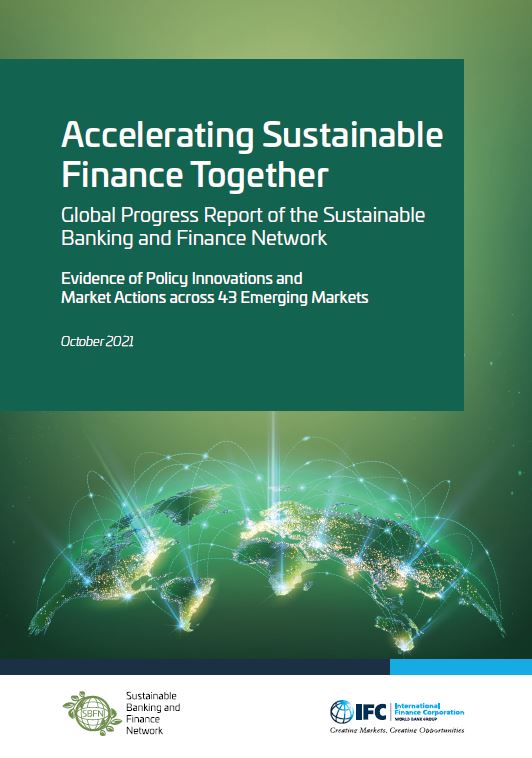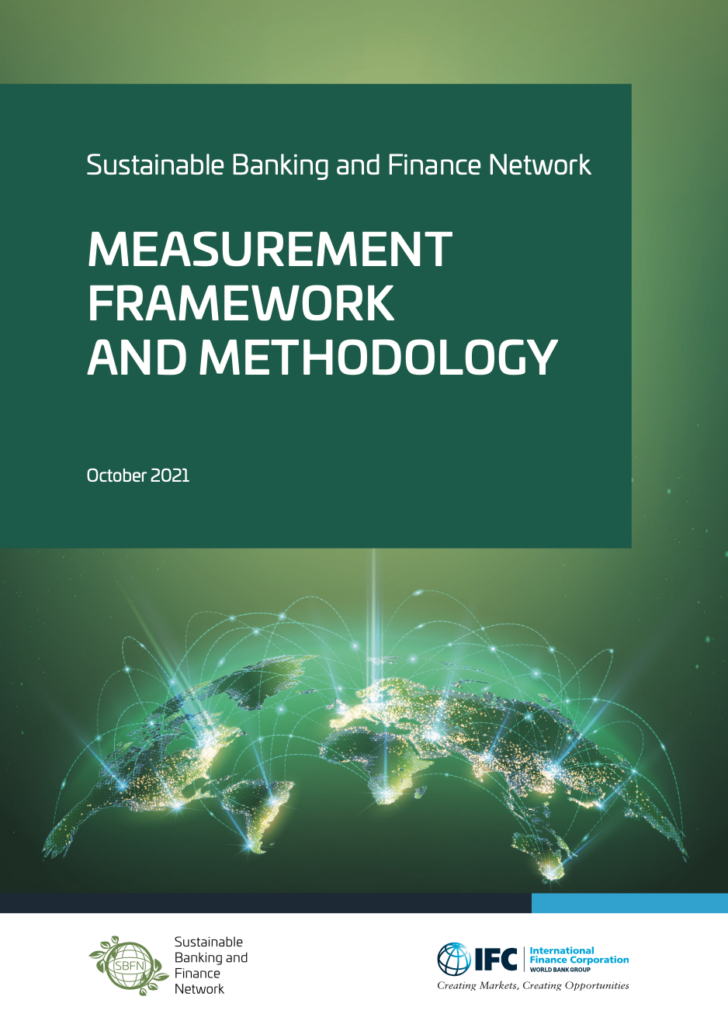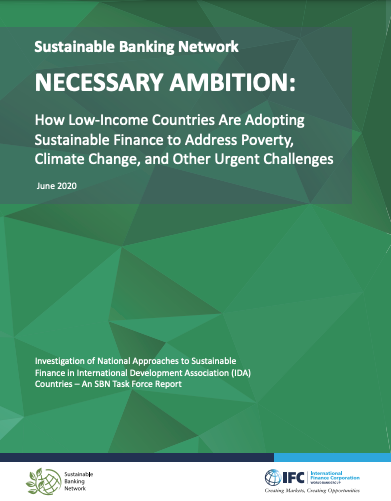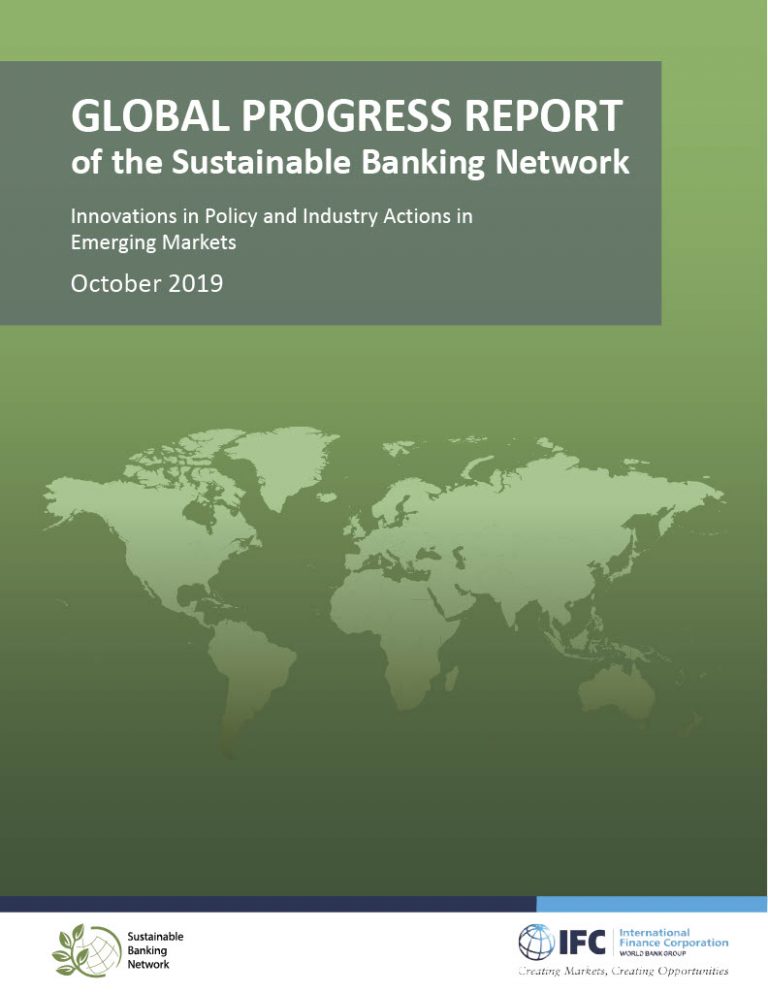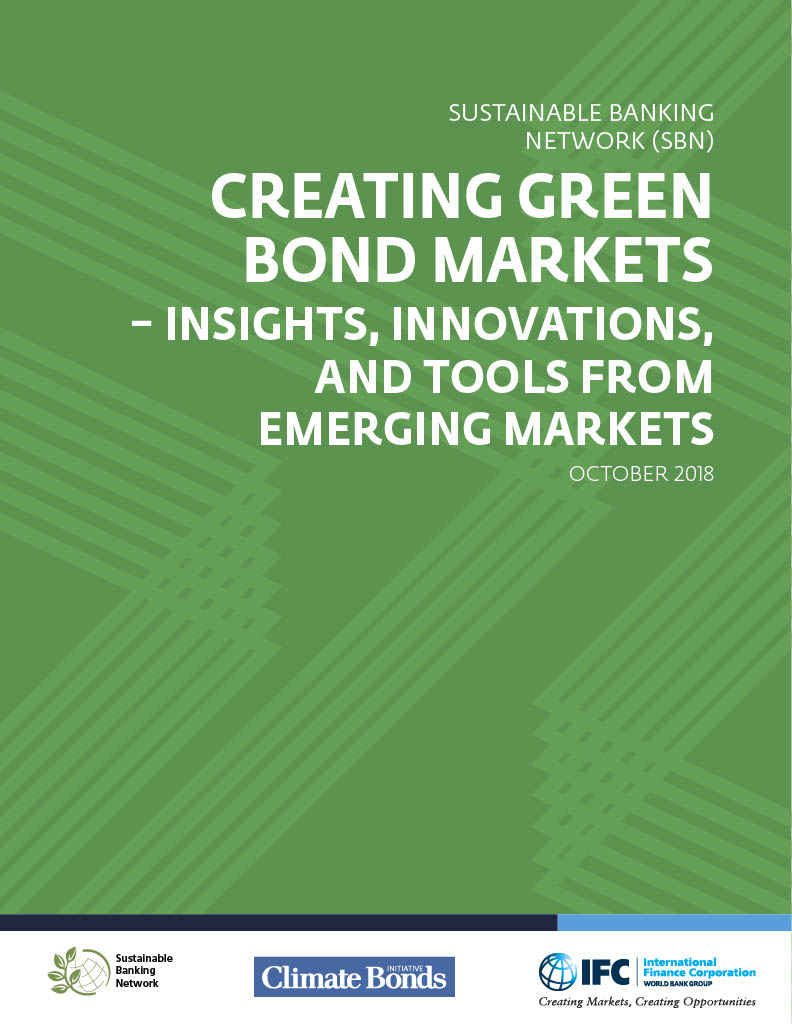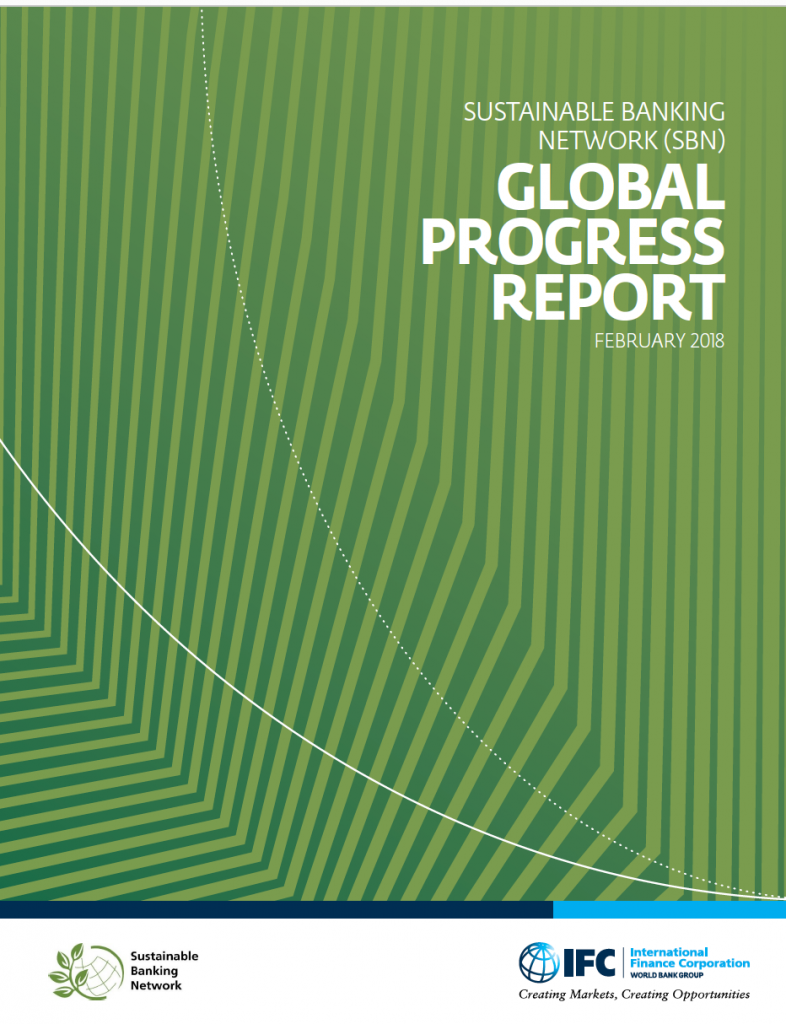Publications
Index of Publications
Roadmap for Advancing Interoperability and Comparability of Sustainable Finance Taxonomies
SBFN Toolkit: Sustainable Finance Taxonomies
SBFN Global Progress Brief – April 2024
SBFN Toolkit: Developing Sustainable Finance Roadmaps – May 2023
Global and Country Progress Reports – October 2021
Measurement and Framework Methodology – 2021
Necessary Ambition – An SBFN Task Force Report – June 2020
Global and Country Progress Reports – October 2019
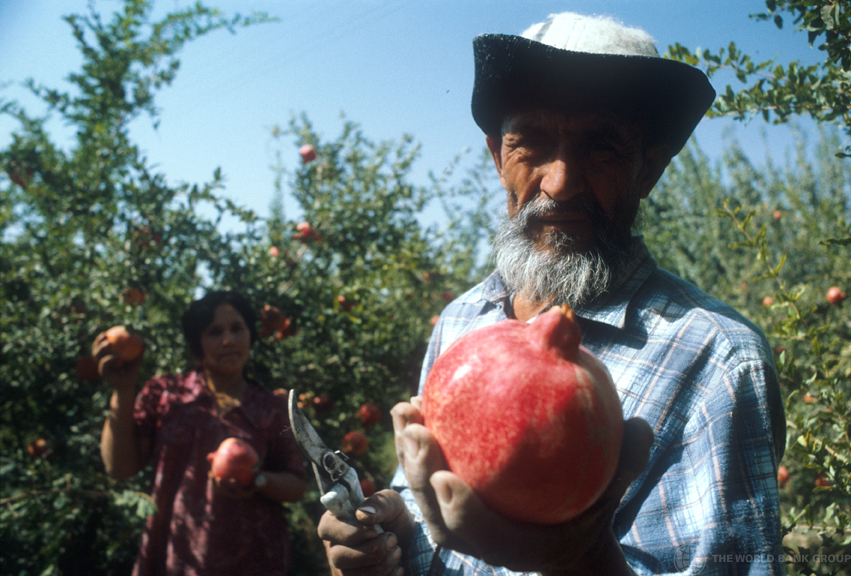
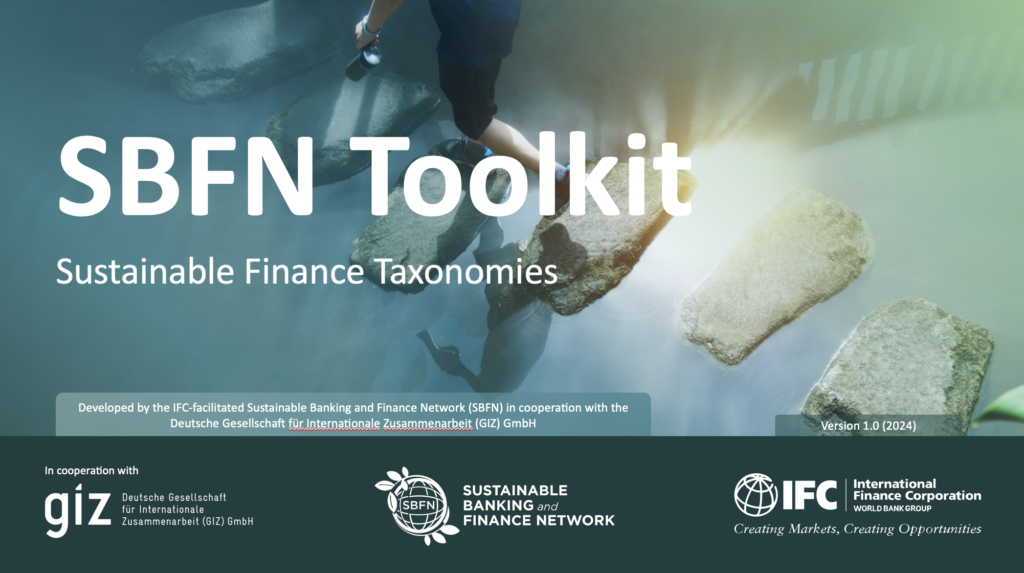
SBFN Toolkit: Sustainable Finance Taxonomies
The toolkit aims to support financial sector regulators, banking associations, and interested users in emerging markets as they navigate the complexities of developing or updating taxonomies.
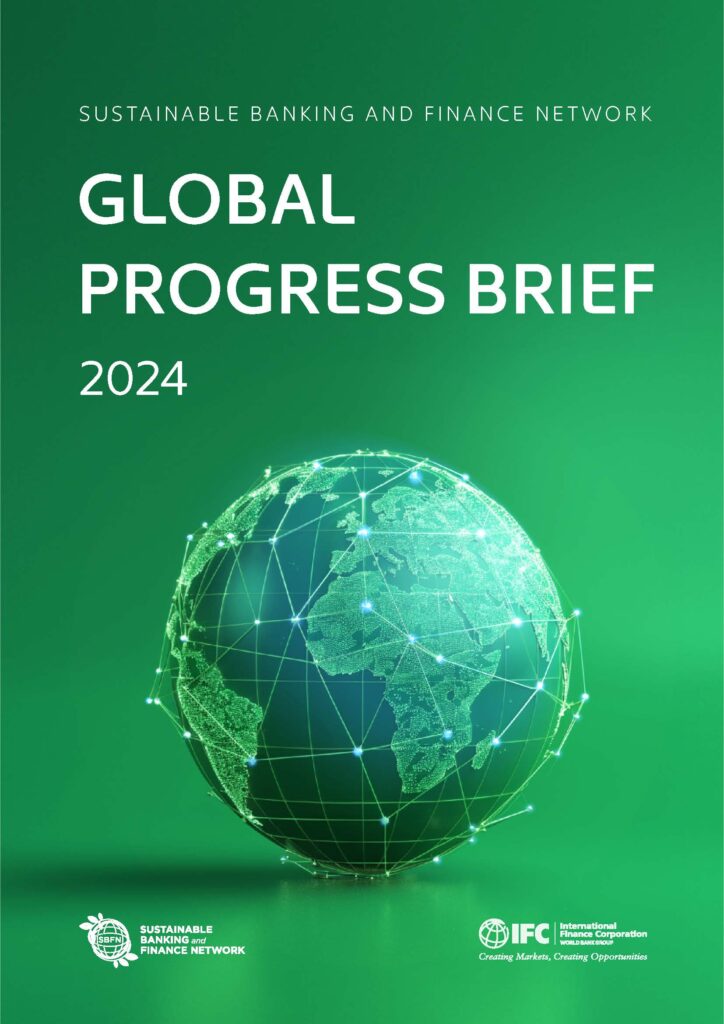
SBFN Global Progress Brief – April 2024
The 2024 SBFN Global Progress Brief offers a comprehensive benchmarking of trends and innovations in sustainable finance across 66 member countries, highlighting key achievements, challenges, and opportunities across Emerging Market and Developing Economies (EMDEs). The Global Progress Brief is complemented by SBFN’s new dynamic one-stop Data Portal, which captures detailed data and on SBFN members’ progress and initiatives.
English | 44 Pages | pdf
Download
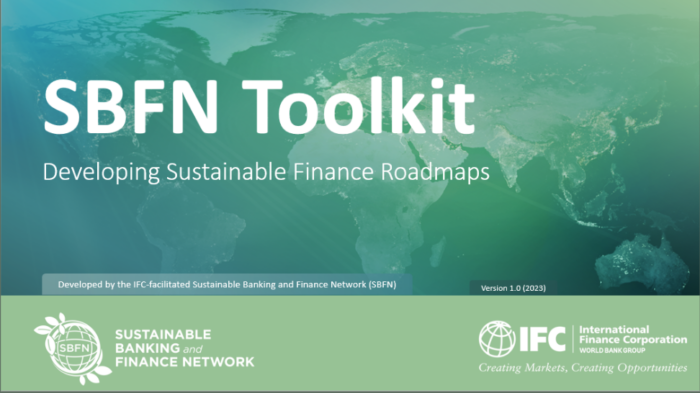
SBFN Toolkit: Developing Sustainable Finance Roadmaps – May 2023
The Toolkit consists of a Guide document and Mapping and Benchmarking Tool. Practical templates and resources in the Toolkit offer further support in developing national or regional sustainable finance roadmaps.
Guide – English | 116 Pages | pdf Download
Mapping and Benchmarking Tool – English | Excel (.xlsx) Download
READ MORE

Global and Country Progress Reports – October 2021
This report captures a significant increase in collective efforts between regulators and industry across all parts of the financial sector, and at regional and global level, to advance sustainable finance. This has emerged as an essential strategy to harmonize definitions, disclosure requirements, and good practice expectations for managing sustainability risks and opportunities in all financial sector activities.
English | 107 Pages | pdf
Download READ MOREMeasurement Framework and Methodology – October 2021
In 2016, members requested a systematic comparison of, country approaches to developing national sustainable, finance frameworks.
The SBFN Measurement Working Group was established to convene member inputs on the design of a common framework to benchmark country progress and accelerate peer-to-peer knowledge exchange. The Framework is designed to inform the biennial SBFN Global Progress Report.
English | 10 Pages | pdf
Download READ MORENecessary Ambition – An SBFN Task Force Report – 2020
The report, “Necessary Ambition: How Low-Income Countries Are Adopting Sustainable Finance to Address Poverty, Climate Change, and Other Urgent Challenges,” provides a first-ever look at the drivers and innovation that underpin sustainable finance efforts in low-income countries and captures lessons that will benefit other emerging markets.
English | 64 Pages | pdf
Download READ MOREGlobal and Country Progress Reports – October 2019
This report documents the accelerated progress of SBFN members in translating policy innovations into practical implementation.
It builds on the 2018 Global Progress and Country Reports and applies a robust measurement framework agreed on by all SBFN members.
English | 94 Pages | pdf
Download Read moreSBFN Creating Green Bond Markets Report – October 2018
The research is drawn from examination of thirteen country and regional green bond frameworks; twenty-two SBFN members surveyed, and nine interviews with regulators, stock exchanges and banking associations.
It reflects strong market-based action, with policy leadership taking place among emerging markets to drive capital to investments and assets with environmental and social benefits.
English | 74 Pages | pdf
Download Read moreGlobal and Country Progress Reports – February 2018
This report is SBFN’s first Global Progress Report. The report presents a systematic view of progress toward sustainable finance among the emerging economies represented by SBFN. It is based on a unique measurement framework to assess sustainable finance initiatives across emerging markets.
English | 74 Pages | pdf
Download Read more
